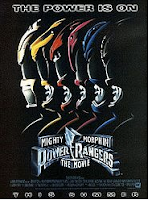The digital narrative I selected was postsecret.com, I have heard of this website before and used to look at it from time to time, but I forgot how interesting it was. The framework and layout for this digital narrative is very, very simple. It is basically a blog spot where a group uploads cards they receive from people revealing their secrets and they post them online. You can click on the uploaded images and they enlarge on a separate window page. The reading says that "distributed narratives are stories that aren’t self-contained. They’re stories that can’t be experienced in a single session or in a single space. They’re stories that cross over into our daily lives, becoming as ubiquitous as the network that fosters them" which this website definitely is. To keep up with this website you usually have to check into it every day or every other day to see new posts and once the posts are gone you can't go back and revisit them. This narrative keeps going and going with threads. This website shows inspirations for people to write down their deepest secrets and anonymously post them online without someone figuring out who they are, it conceals their identity. In the article it also says:
1. Distribution in Time: The reader, player or viewer experiences the narrative in bits and pieces over a period of time.
2. Distribution in Space: There is no single place in which the whole narrative can be experienced.
3. Distribution of Authorship: No single author or group of authors has complete control of the narrative.
This is true in this narrative, you get to see different secrets daily which is just bits and pieces of the overall site and all of the cards that have been posted in the past. Also although the narrative can be experienced on one web page, scrolling down ad up is no single place to view the entire thing and also because it changes periodically nothing will stay visible to the public on this site forever. The third point is also true, although there is a person or small group that posts these secrets but millions of people send in their secrets to be posted on the site.
Personally, I really like the narrative I think it is creative and interesting. It can also be emotional with some of the secrets that get sent in and posted. I think it is a good space for people to tell their secrets without being exposed.
an example:














